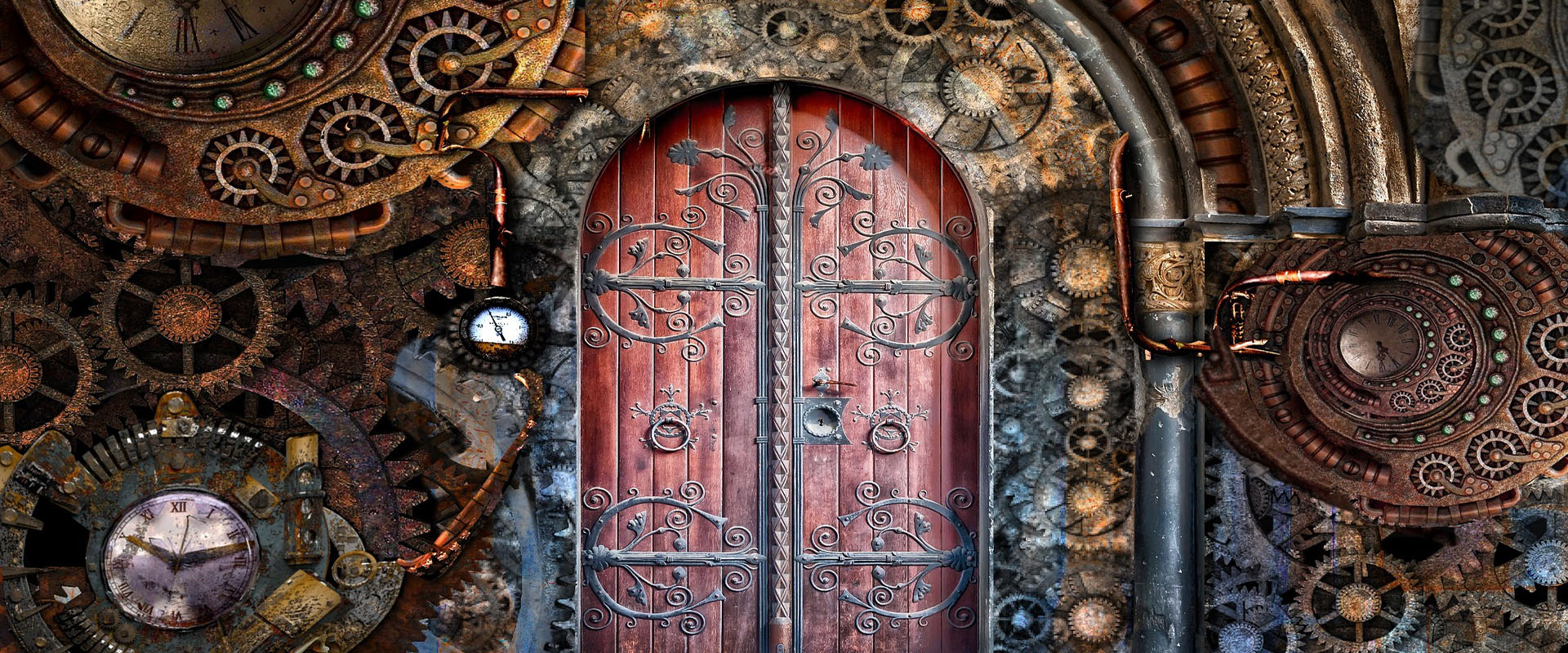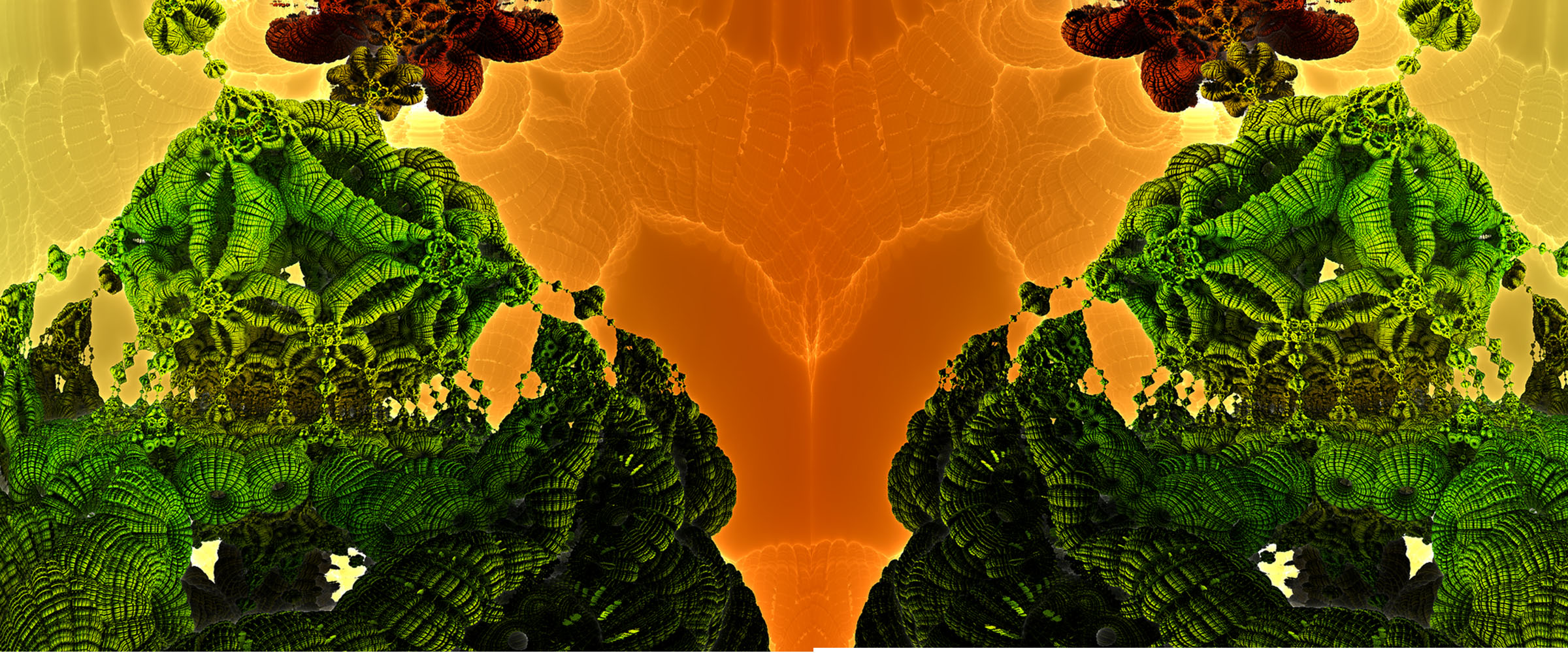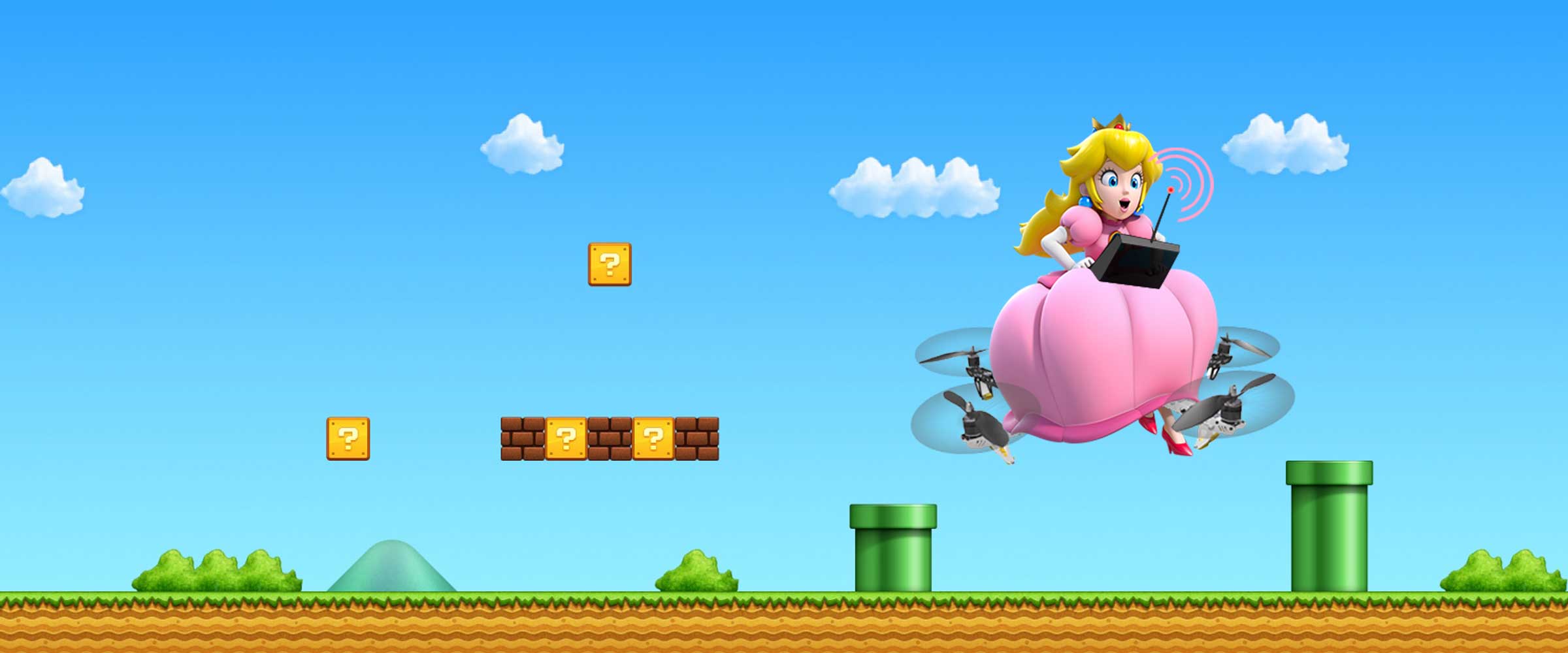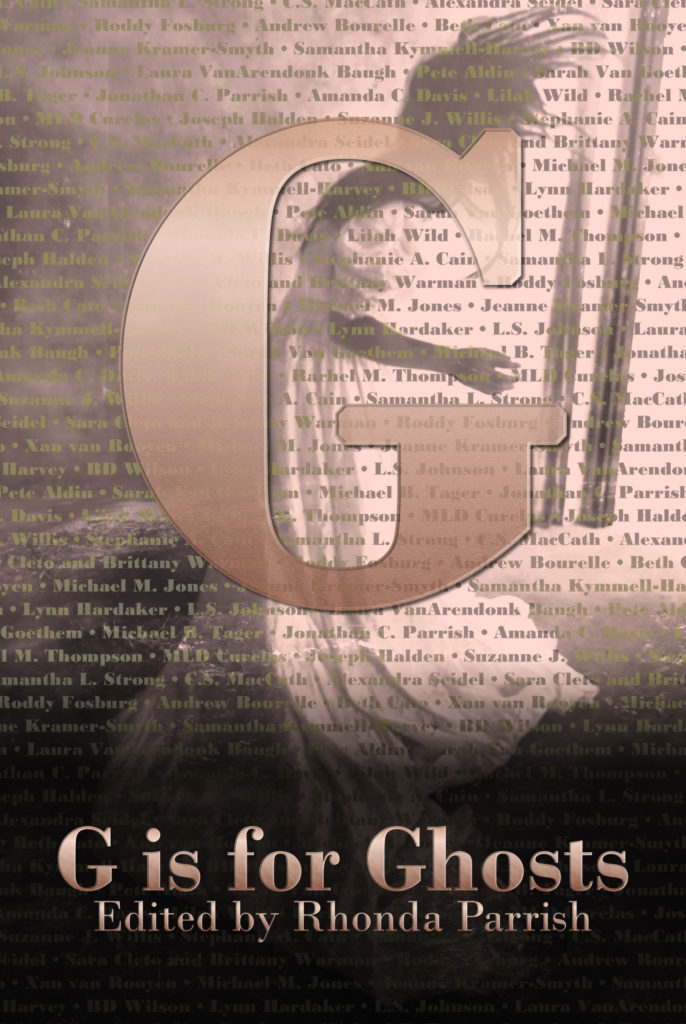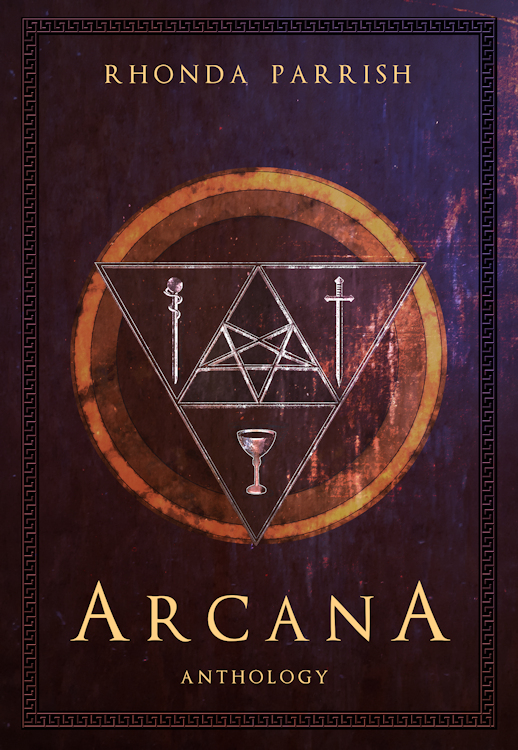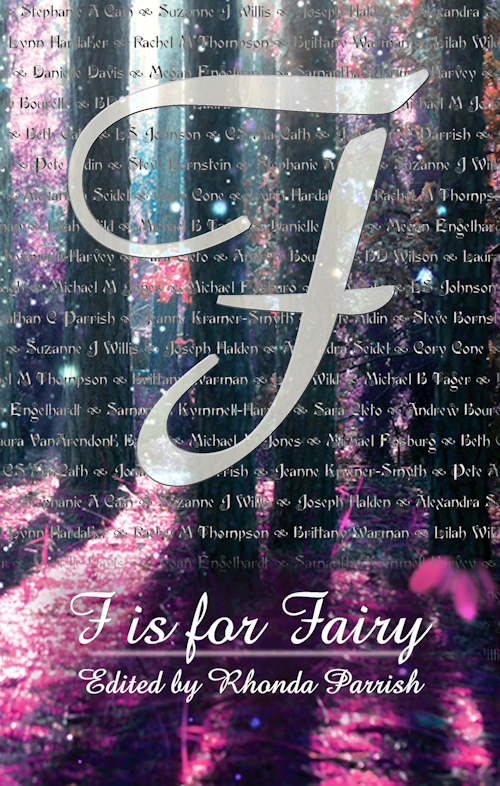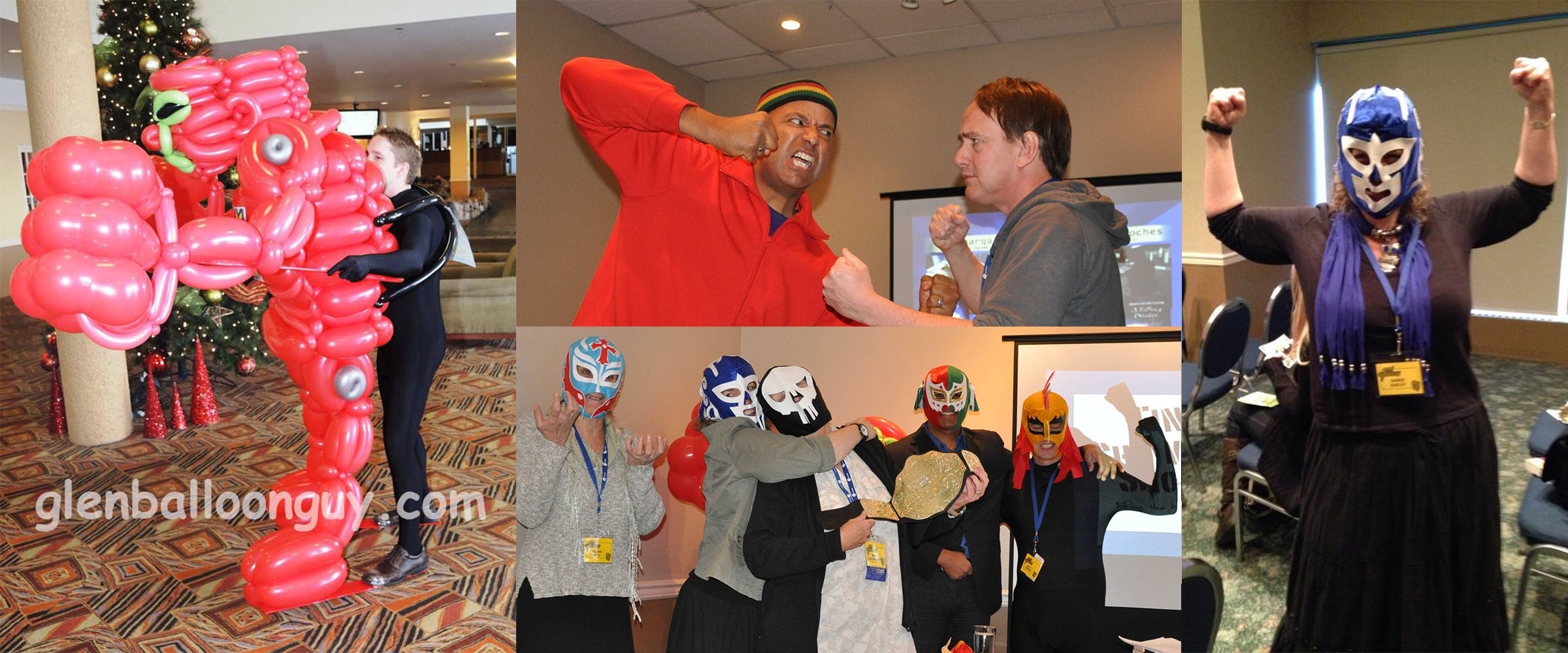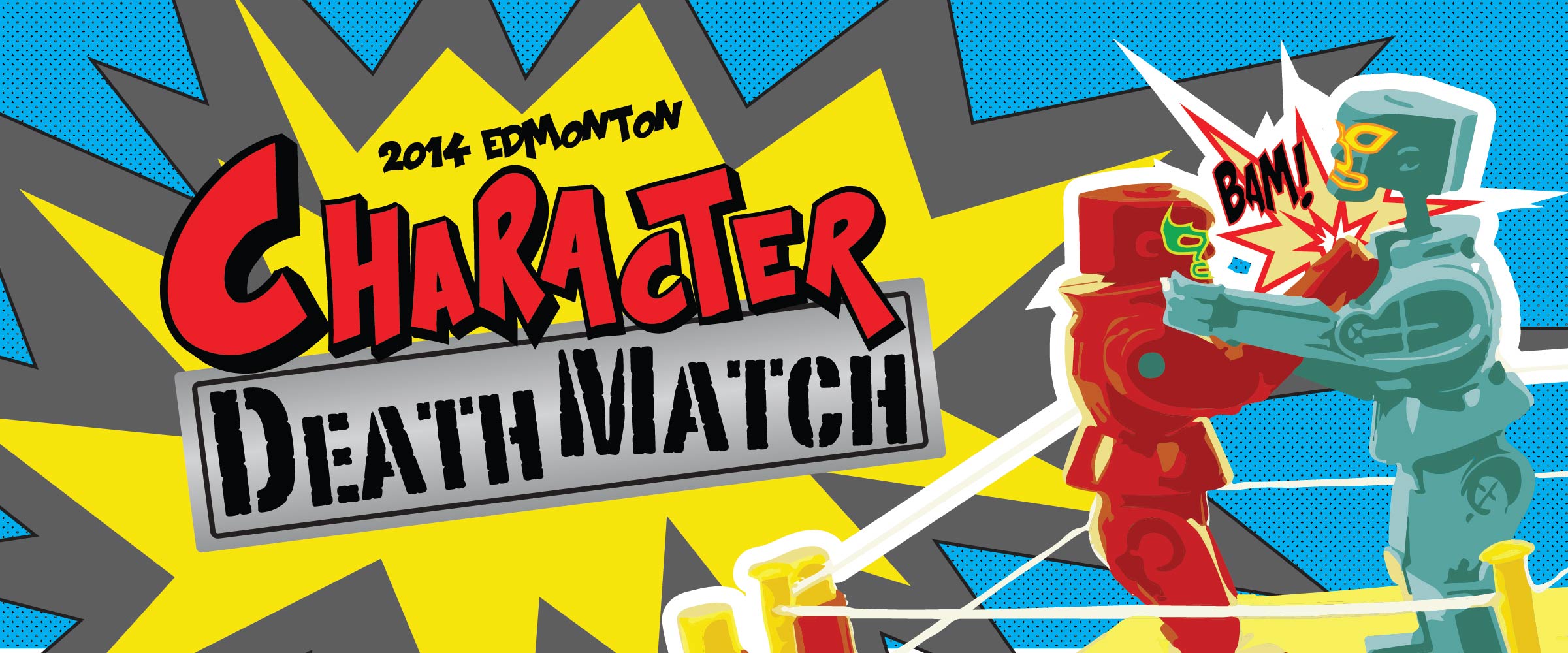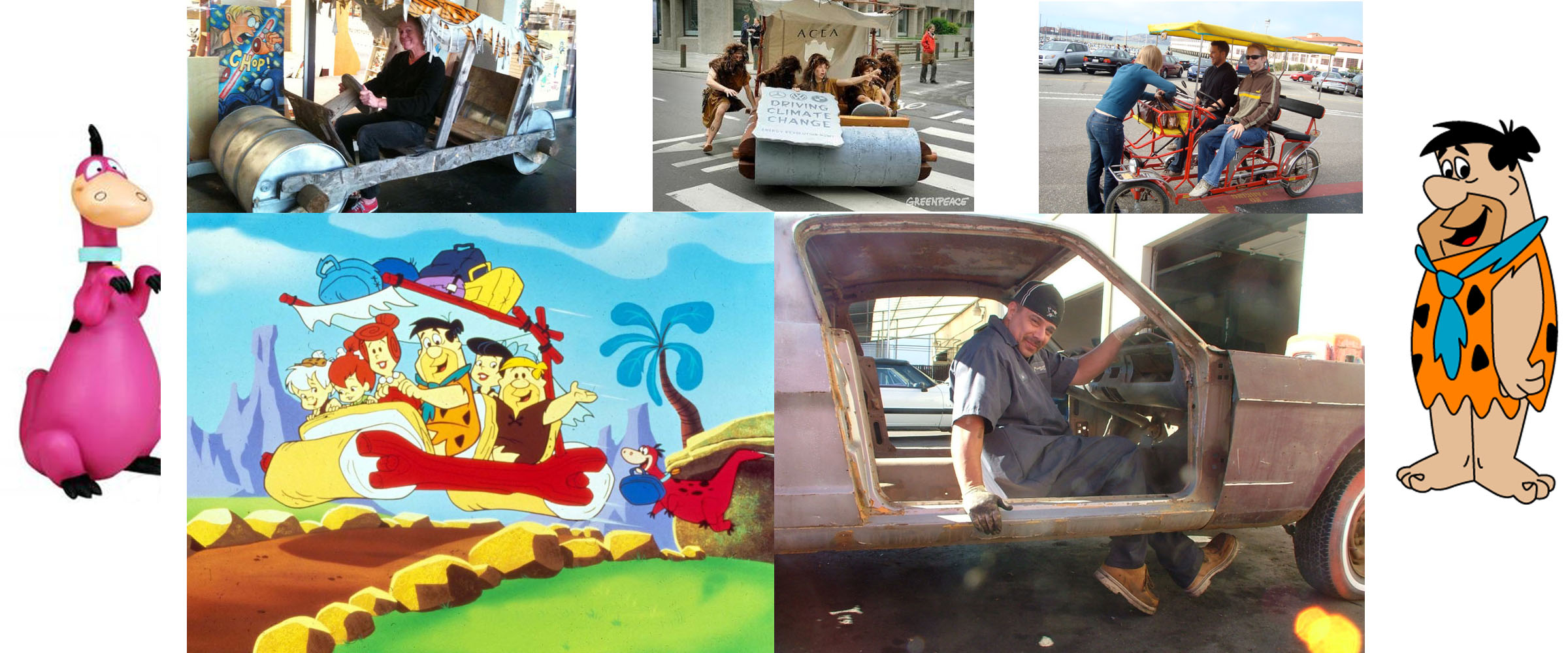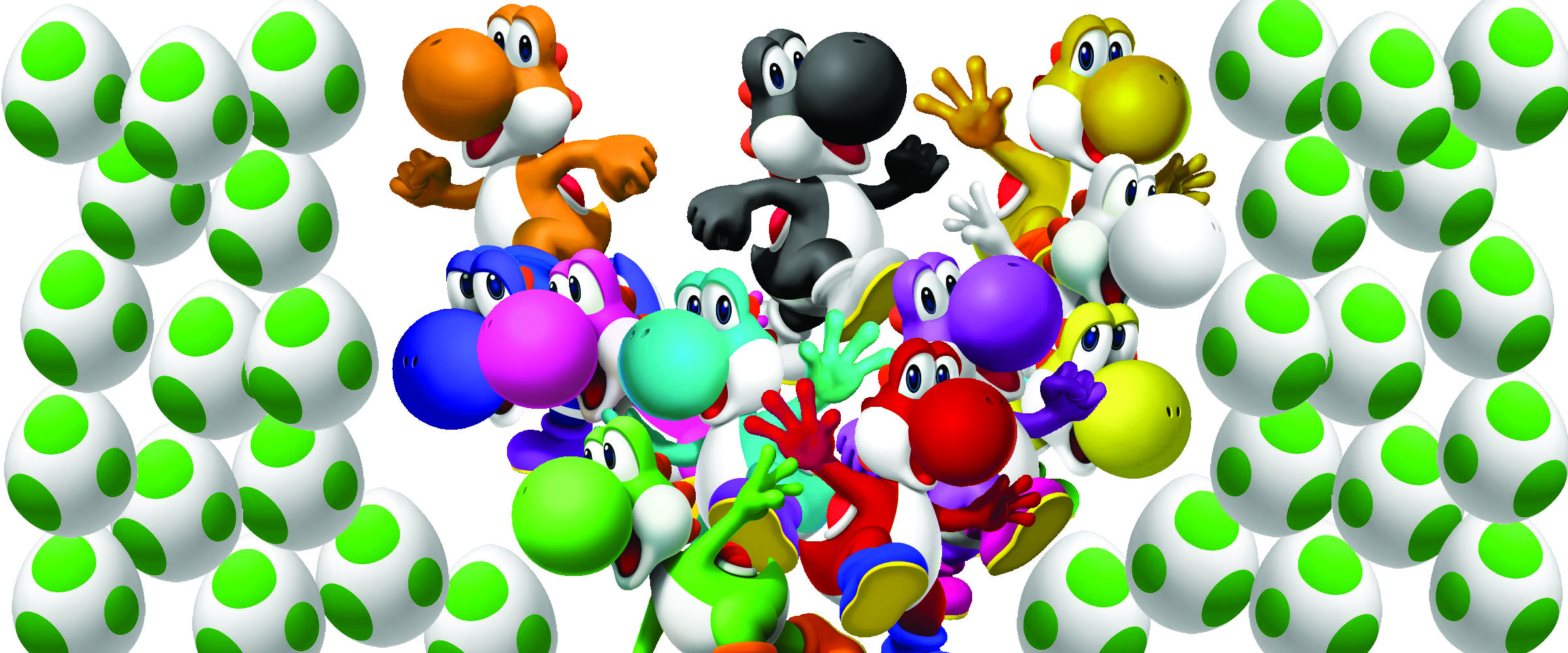About
A wizard in search of magic, an astronaut in need of space, and a hopeless enthusiast of frivolity. I’ve shot things with giant lasers, worn an astronaut costume to try and get into space, and made my own soap. A graduate of the Odyssey Writing Workshop, I write SF&F in Edmonton, Alberta.
Thursday night (Nov 9) Roberta Bondar, Canada’s first woman in space, will be speaking at Festival Place. https://festivalplace.ab.ca/view/shows/id/1004#showtimes
In the past few months, World Weaver Press has released the next two installments in Rhonda Parrish’s Magical Menagerie anthologies: Corvidae and Scarecrow. In Corvidae, “birds are born of blood and pain, trickster ravens live up to their names, magpies take human form, blue jays battle evil forces, and choughs become prisoners of war.” In Scarecrow, “ancient enemies join together to destroy a mad mommet, a scarecrow who is a crow protects solar fields and stores long-lost family secrets, a woman falls in love with a scarecrow, and another becomes one.” These two fascinating works feature many bright authors, and I had the opportunity to interview some of them.
This week I got to glimpse inside the mind of genius behind the magical menageries, writer-editor Rhonda Parrish. In the words of Sara Cleto, Rhonda is a “shapeshifter with talents to match her every incarnation- magpie tenacity for picking the shiniest submissions, nightingale notes for crafting tales, and bright, feline eyes for seeking out her photographic subjects. She balances on the knife-edge of darkness and light, a sorceress of both realms.”
Joseph Halden: How did you find the process of editing Corvidae and Scarecrow compared to the previous magical menagerie, Fae? Was it difficult to coordinate the two anthologies and make them work well with each other? Were there many surprises along the way?
Rhonda Parrish: It was significantly more difficult to work on two anthologies at the same time to focus on just one, more than twice as difficult actually LOL. I think part of that was just time management but a bigger part was what you refer to here–trying to make them work well together. It’s an interesting balancing act I’d never attempted before and it led to a lot of extra steps and work.
For example, not only did I have to solicit submissions from people to add diversity and fill in gaps (“Please, please, submit something that includes a corvid other than a magpie, crow or a raven.”), I also had to solicit story submissions for one book to counter balance stories in the other. Tricksy.
I enjoyed the challenge a great deal and I think the resulting anthologies are amazing but I am not going to do another set of paired anthologies any time soon–or if I do they’ll be released further apart LO
JH: Have all the magical menageries been your brainchildren? Is/are there any that are particularly dear to you?
RP: They have, which makes them all exceptionally special to me ☺ However, while I love all of them they are each dear to me for reasons unique to themselves as well.
Fae’s publication marks a turning point in my career as an editor and anthologist. That is the book which put my work on people’s radar and opened the door for the rest of the series.
Corvidae is an anthology I’ve wanted to do forever. I feel a connection to corvids that is both ridiculous and profound so being able to honor them in an anthology like this means a lot to me.
Scarecrow… Scarecrows are so wonderfully uncanny that I couldn’t resist the opportunity to do a collection all about them. Beyond that it’s got my favourite cover and contains what I consider to be some of the strongest stories from the series within its pages. I’m not sure if I’m supposed to say that in public but there ya go LOL
JH: What authors or stories spurred you as a child (or later) to delve into the rich magical fantasies you now share with the world?
RP: I was really lucky in that my mother never ever censored what I read and there were always books around the house. It resulted in a few awkward moments such as when I did a grade four book review on Christine but I am incredibly grateful.
I grew up on a super fun mix of romance novels, Stephen King, Choose Your Own Adventure, Dragonlance, Xanth, Shakespeare, VC Andrews and basically whatever fantasy and horror novels I could find in my local second-hand store.
These days my tastes remain pretty eclectic. I could talk about them for hours but I’m afraid to start naming names for fear I’ll forget someone and then spend hours being mad at myself LOL
JH: Do you look at the birds in your yard differently after doing these anthologies?
RP: I don’t think so, no. I’ve always felt pretty connected to corvids, especially the ones in my yard and neighbourhood (my husband refers to them as my soulmates and I think he’s only half-joking) so Corvidae didn’t make me look at them differently… but it did make me feel like I was honouring them.
JH: Why did you discriminate against Phasianidae birds when you put these works together?
RP: Well, I had to discriminate against a lot of birds when I put these works together because you’ve got to draw the line somewhere. I *do* love birds from the Phasianidae family though and you could certainly get a kick-ass cover for an anthology about them… Maybe you and I should co-edit an anthology filled with Phasianidae stories. Do you think there’s a market out there for those stories? ☺
JH: Do you have any advice for budding authors? Budding editors?
RP: “Ever tried. Ever failed. No matter. Try Again. Fail again. Fail better.” That’s a quote from Samuel Beckett. It’s how I try to live my life (in fact I intend to get ‘Fail Better’ as my next tattoo) and I think it especially applies to writing or editing. Just don’t give up.
Sometimes it’s going to suck. It’s going to suck so bad and you’re going to wonder why you keep trying, keep banging your head against walls but sometimes… sometimes it’s amazing and you don’t get to experience those amazing bits if you give up.
JH: You’re a very active and ambitious writer/editor. How do you approach doing all the things, and stay sane?
RP: Want to know a secret? I’m not sure I’m doing so well at that sanity thing LOL
I’m still trying to find the balance. I go through this cycle where I take things on and take things on, and then I find a sweet spot where everything feels right. Timelines are meshing, I’m being consistently productive and things are going awesome and I’ll stay there for a while. And it’s wondrous… until it’s not.
Suddenly I’ve got too many things going on and not enough hours in the day. I feel like I’m drowning in projects so I start prioritizing, cutting back, trying to find the things which are really important to me and focus on them. Then I find another sweet spot and everything is working and I’m productive and feeling positive…
And then I have a great idea for a new project and a little extra time so why not? So I take that on. And the next thing, and the next thing, and the cycle starts over again.
As I get to know myself and my process the cycle becomes a bit less dramatic, less exciting to watch from the outside, and I get to spend more and more time in those sweet spots but still, sometimes it’s a struggle.
…on a more practical level–I use a whiteboard to keep track of all my projects, deadlines and to-do lists, I go through more Post-it notes than anyone else you’ve ever seen and I make a ridiculous number of lists LOL
JH: Any hint on what we can expect after the next installment, Sirens?
RP: I’m afraid not LOL I have ideas but it’s a rather long list and I haven’t had a chance to pick one and write up a pitch for World Weaver Press Editor-in-chief Eileen Wiedbrauk about it yet. Besides, right now I’m swimming (ha! I’m so funny) in SIRENS submissions so I’m just going to focus on them for a little bit, then we’ll see.
Thank you for your honest and thoughtful answers, Rhonda! If you want to see some of the fantastic projects she’s put together, visit her at www.rhondaparrish.com. And of course you can check out her magical menageries, Fae, Corvidae, and Scarecrow — available now! If you’re a writer looking to get involved, her next project SIRENS is currently open for submissions.
In the past few months, World Weaver Press has released the next two installments in Rhonda Parrish’s Magical Menagerie anthologies: Corvidae and Scarecrow. In Corvidae, “birds are born of blood and pain, trickster ravens live up to their names, magpies take human form, blue jays battle evil forces, and choughs become prisoners of war.” In Scarecrow, “ancient enemies join together to destroy a mad mommet, a scarecrow who is a crow protects solar fields and stores long-lost family secrets, a woman falls in love with a scarecrow, and another becomes one.” These two fascinating works feature many bright authors, and I had the opportunity to interview some of them.
The second is Kat Otis, who lives a peripatetic life with a pair of cats who enjoy riding in the car as long as there’s no country music involved. Her fiction has appeared in Orson Scott Card’s Intergalactic Medicine Show, Daily Science Fiction and Penumbra eMag. Her story “Whistles and Trills” appears in Corvidae.
Joseph Halden: Your story hints at events happening on a larger scale than what we glimpse in Morgaine’s tale. Do you have any plans to expand on those ideas, or have you already?
Kat Otis: I haven’t made any specific plans to write other stories in this world, though it’s definitely a possibility. I find twentieth-century history to be insanely depressing so it isn’t my go-to period for historical fantasy.
That said, part of the initial inspiration for this story was my research on twentieth-century spy pigeons. I cannot emphasize enough how awesome spy pigeons are, especially when you’re trying to communicate information in a way that can’t be easily intercepted by the enemy. Almost two thirds of the WWII Dickin Medals (the UK’s award to honor animals in war) were awarded to pigeons! So there are definitely a lot of possible “spy corvidae” ideas floating around in my head and it’s likely that I’ll eventually write some of them.
JH: Can you give us your take on why the corvids in your story were on a prisoner transport?
KO: The Nazis attempted to purge Germany of all “undesirables” – most famously Jews, but also Roma, homosexuals, the mentally and physically disabled, and many others. Alas, it doesn’t require a huge stretch of the imagination to lump their resident non-humanoid intelligent birds into the same category.
JH: How did you come up with the lines to separate the warring creatures in your alternate world?
KO: In general, the frost giants, corvidae, and sea serpents would prefer to keep to themselves rather than involve themselves in human infighting. But the geographical proximity of the Axis powers to the Alps (where I imagine many frost giants live) provides a strong incentive for the Nazis to woo their various chieftaincies into a military alliance. And the Nazi leadership has the requisite ruthlessness to give the frost giants whatever they want to make sure that alliance sticks…
The corvidae’s entrance into the war doesn’t involve unilateral support for the Allied side – the Nazis might have burned their bridges there, but they weren’t the only Axis power. And a lot of corvidae are going to want to stay neutral, seeing this as a primarily human concern.
As for the sea serpents… if I ever get the desire to write a submarine story, then we’ll see. I should mention I was just at a submarine museum a few weeks ago…
JH: Which side of the war would Phasianids be on?
KO: The dinner plate? Okay, okay, seriously. I think there would be Phasianids on both sides of the war. Unlike my frost giants, who are limited to specific geographical regions, Phasianids are pretty much everywhere and would have evolved a variety of relationships with local powers during the war. Each different species, and each species in each nation, would have different goals, motives, and politics.
JH: The details depicted in all the flight scenes are very authentic. Did you draw from any aviation experience(s) of your own, or was that just a result of good research?
KO: I come from a family of pilots, though I’m not a licensed pilot myself. The last time I flew a plane, I nearly flipped it on take-off. It’s extremely hard to keep a plane level when your co-pilot decides to open his bloody door, and no, I don’t care if the seat belt was caught in it! Ahem.
Anyway, I’m glad the flight scenes come across as authentic as I spent several days picking various family members’ brains to make sure I got things right. They’re not writers themselves, but they are extremely enthusiastic when I hijack family gatherings with things like, “Help me crash a plane!”
JH: Why do you think stories of the magical, the fantastic, are relevant to readers today?
KO: I think speculative fiction is vital to fostering readers’ imaginations and helping them see beyond the limits they’ve been taught to impose on themselves and the world around them. I’m reminded, in this moment, of one of my favorite childhood movies – Flight of Dragons – where the wizard explains that things like the crystal ball inspired mankind to invent radio and television. If we didn’t dream of dragons and winged men, would we have ever learned to fly?
When it comes to historical fantasy and alternate history, in particular, I think that these stories are vital in helping us understand past events and cultures. They let us explore historical contingencies – the “what might have been” if just a few little details get tweaked – and reveal the extent of human uncertainty and agency in a history that readers tend to think of as somehow inevitable and foreordained. They also let us explore the mind-sets of historical cultures; I don’t have to convince readers that people weren’t stupid for believing in X, Y, and Z, I just make those things real and then my readers willingly come along for the ride. In general, if authors push the boundaries far enough, they can bring readers past their preexisting opinions and prejudices to a better understanding of the historical past and what it means for the present – and the future.
JH: You list many online forums as writer resources on your website. Have you been involved in any of these forums personally, and what can you share with us about the experience? Are you still active on them?
KO: I’ve been active on all the forums that I’ve listed on my website, though it’s been a while since I visited some of them. Hatrack and Critters were the first online writing sites where I participated in on a regular basis. The advice and support I got there led to me attending Orson Scott Card’s Literary Bootcamp and my first professional sale! Absolute Write is my go-to forum whenever I need an expert to help me with some aspect of story research – there are some great folks there who are willing to answer all sorts of wacky questions. It also has a much broader focus, for those people who aren’t solely SFF writers.
My current “home” forum is Codex. It’s a wonderful resource, full of awesome people, and provides a good kick-in-the-pants to write by hosting a rotating series of contests. Probably my favorite is the Weekend Warrior contest: for five weekends in a row, we have from Friday night to Sunday night to write a prompt-based flash fiction story, followed by a weekend in which the die-hards attempt to write a short story or novelette in the same length of time. I’ve gotten a lot of great stories – and sales – out of that contest.
JH: What advice do you have for budding authors?
KO: Expect rejection. I know, that sounds depressing, but I think it’s important for budding authors to know rejection is a fact of life for all writers who are out submitting their work on a regular basis. It’s normal. It doesn’t mean that your work is awful. It doesn’t mean that you can’t write. And it definitely doesn’t mean you should give up on your dreams.
Thank you for the realistic yet motivating words, Kat! Check out her story “Whistles and Trills” in Corvidae, available now from World Weaver Press! You can also visit her at www.katotis.com.
A quiet, wintry November morning enveloped me before I strolled into the Ramada Hotel lobby to scope out a location for setup. Eventually my girlfriend Debbie and my friend Glen LaValley joined me, Glen bringing his 10-foot tall beauty of a rock-em-sock-em balloon robot puppet. I’m not entirely sure what order those adjectives go in, but they definitely all belong there.
I slipped right into my black morph suit, adopting the form of the robot’s shadow, and stood as Glen worked his magic to strap the lumbering form to my torso and legs. He gave me tent poles that were attached to the hands. I could push, pull and rotate the massive geo-balloon hands, move the hilariously tiny legs, and make the head bob by flexing my stomach. Children nearby stood transfixed, mesmerized by how far the bar could be raised beyond simple balloon animals.
Everything was ready, and Debbie guided me through the hotel and into the merchant’s room of the Pure Speculation festival. You could practically hear the sound of jaws dropping, and Guest of Honor David Gerrold would later say, “That is the best costume I have seen at any con ever. You have won the Internet today.”
Eventually I had to take off the costume and prop it up next to the water cooler in preparation for the Character Deathmatch. The balloon was a precursor that perfectly set the tone for what was to come.
I donned my chicken lucha libre mask and introduced the history of conflict through the ages: God using it to maintain his interest in humanity’s story, the Mayans using hip-volleyball Pitz games as preludes to human sacrifice, and finally the lucha libre in modern times. The lucha libro evolved from this form of wrestling, and pitted Peruvian writers against each other onstage in five-minute sessions where the audience cheered at their projected stories before choosing a winner at the end. The winner progressed for a chance at an ultimate prize of a published novel, while the losers–I assume–were beheaded.
This all inspired the creation of the character deathmatch, where authors go up in pairs to have their creations duel one another. Each author reads a selection, answers a death-defying question and briefly outlines why he/she would defeat the other. Banter and jeering is customary and expected, and all the talk in the world is ultimately mute next to the power of the audience’s vote. Winners progress and losers are eliminated and sacrificed in the refreshments room.
The 2014 Pure Speculation Deathmatch opened with the Celtic Warrior-chief of the Suetonii ARIENNE against my hyperminded boy genius VOLTAN. The brilliance of having a boy who could kill with his mind was apparently naught next to the sheer brutality of a Celt armed with a sturdy head-smashing rock. Despite the fact that defeating the event organizer would have DIRE CONSEQUENCES, Barb Galler Smith’s ARIENNE won the round.
The next dramatic tangle pitted Greg McKitrick‘s truculent retired cop SAM WATSON against the haunted secretary MARIE JENNER from Eileen Bell‘s newest mystery series. The two characters were very down-to-earth and likeable, but only one of them could make it out, and MARIE seemed to have more cards stacked in her favour (OK, she literally had more voting cards lifted in her favour, plus she had the entire spiritual world to tap into if she needed to).

 The next heavyweight match raised the temperature of the room by several degrees as Minister Faust prepared to throw TAHARQA (or HARQ) into the ring. Wayne Arthurson interrupted the start of the reading by placing a large prominent placard of his book “Fall From Grace” which featured HARQ‘s competitor, the gambling-addict with a titanic pain threshold: LEO DESROCHES. Leading up to the match the two “friends” bantered over text, and neither would cede until they’d given it everything they had.
The next heavyweight match raised the temperature of the room by several degrees as Minister Faust prepared to throw TAHARQA (or HARQ) into the ring. Wayne Arthurson interrupted the start of the reading by placing a large prominent placard of his book “Fall From Grace” which featured HARQ‘s competitor, the gambling-addict with a titanic pain threshold: LEO DESROCHES. Leading up to the match the two “friends” bantered over text, and neither would cede until they’d given it everything they had.
Minister Faust made the audience’s mouth water with a vivid description of a chicken/turkey-like meal preparation with HARQ and his son. Wayne Arthurson left hearts pounding describing LEO‘s desperate situation at gunpoint in the middle of nowhere. The gloves came off as each outlined the other’s weaknesses: the fact that Wayne tried to denounce the legitimacy of sci-fi, the fact that HARQ was too impractical compared to the no-nonsense LEO, and even the fact that mystery writers had been guests of CBC’s Q. These guys had to be torn off each other before they started biting ears.
In the end it was a very close vote (“for a better Canada” as Minister Faust would put it) with Minister’s HARQ emerging victorious.

 The final match of the day featured no slouches — Karen Dudley‘s awesomely dude-ical gorgon slayer and Kraken Killer PERSEUS stepped up to Rhonda Parrish‘s half-incubus mercenary with a sentient sword BAYNE. Rhonda gave an excellent reading after the difficult position of being right after Minister Faust, and a side character’s awe-inspiring description of BAYNE left us holding our breaths. Karen Dudley‘s PERSEUS seemed too cool for cool, and seemed almost ready to seduce BAYNE with “something in his back pocket” (which I later discovered was a medusa head that could still turn you to stone. These authors don’t mess around). The medusa head was probably the sole reason why BAYNE got stoned and started affirming “Duuuuude” to PERSEUS by the end. Another close battle between two fantastic characters left the audience in eager anticipation for the following day’s finals.
The final match of the day featured no slouches — Karen Dudley‘s awesomely dude-ical gorgon slayer and Kraken Killer PERSEUS stepped up to Rhonda Parrish‘s half-incubus mercenary with a sentient sword BAYNE. Rhonda gave an excellent reading after the difficult position of being right after Minister Faust, and a side character’s awe-inspiring description of BAYNE left us holding our breaths. Karen Dudley‘s PERSEUS seemed too cool for cool, and seemed almost ready to seduce BAYNE with “something in his back pocket” (which I later discovered was a medusa head that could still turn you to stone. These authors don’t mess around). The medusa head was probably the sole reason why BAYNE got stoned and started affirming “Duuuuude” to PERSEUS by the end. Another close battle between two fantastic characters left the audience in eager anticipation for the following day’s finals.
Because Barb beat the event organizer (me), she was pitted against Saturday’s toughest competitor: Minister Faust. It seemed Minister Faust’s impeccable reasoning and debate skills would trump Barb’s “kill people with rocks” Celtic warrior, but Minister seemed to keep his gloves in check this round, and held back on a few opportunities to deliver haymakers (apologies to anyone who knows what these terms actually mean). This second day was marked by a certain respect and kindness between competitors, and this match set the tone. ARIENNE begrudgingly defeated HARQ with her trademark stones to raise HARQ‘s child as her own. As Minister Faust said, “How charming.”
 The Kraken-killer PERSEUS returned to face MARIE JENNER, and though Eileen Bell made some compelling arguments for how MARIE could be likened to a meat tenderizer (after being asked what kind of utensil MARIE would be), ultimately the son of Zeus stumbled his way into another victory (much like he apparently did with the Kraken and the Gorgon).
The Kraken-killer PERSEUS returned to face MARIE JENNER, and though Eileen Bell made some compelling arguments for how MARIE could be likened to a meat tenderizer (after being asked what kind of utensil MARIE would be), ultimately the son of Zeus stumbled his way into another victory (much like he apparently did with the Kraken and the Gorgon).
 The finals had arrived, and the last two standing were Barb Galler-Smith’s ARIENNE and Karen Dudley‘s PERSEUS. Both from bygone eras, ARIENNE‘s stones multiplied as Barb revealed hordes of angry children wielding rocks. The sticks and stones seemed to pale in comparison to PERSEUS who could whip out the medusa head and turn THEM into stones. The two ladies joked, congratulated, and had to be reminded “This is a Deathmatch!” by an audience member. ARIENNE in the end seemed the only one unrelenting in her quest for brutality. After a riveting and hilarious bout of banter, ARIENNE defeated PERSEUS by a small margin, only after both creators admitted the two characters would probably get it on.
The finals had arrived, and the last two standing were Barb Galler-Smith’s ARIENNE and Karen Dudley‘s PERSEUS. Both from bygone eras, ARIENNE‘s stones multiplied as Barb revealed hordes of angry children wielding rocks. The sticks and stones seemed to pale in comparison to PERSEUS who could whip out the medusa head and turn THEM into stones. The two ladies joked, congratulated, and had to be reminded “This is a Deathmatch!” by an audience member. ARIENNE in the end seemed the only one unrelenting in her quest for brutality. After a riveting and hilarious bout of banter, ARIENNE defeated PERSEUS by a small margin, only after both creators admitted the two characters would probably get it on.
And so a new champion was added to the Character Deathmatch Hall of Fame: ARIENNE, the Celtic Warrior-chief of the Suetonii featured in the Druids saga by Barb Galler-Smith.
A huge thank you to all the contestants who bravely took the stage to have their characters ribbed; to the Pure Speculation convention organizers who helped give the event a great venue, time, and opportunity; to the incredible Glen LaValley for making such a unique and memorable balloon costume; to the wonderful Debbie Ha for designing the cards, and to the audience who made the voting such a close and exciting race.
I’VE DONE A FEW BOOK EVENTS, and I always felt the spirit of the event should better capture the raucous enthusiasm some books engender. When I read a good book, I want to run outside and scream about it to the world. I’m not alone in this regard, so why then, do so many book events feel stifled? Peru offered me the answer I was looking for: Lucha Libro, a twist on Lucha Libre, Mexico’s pro wrestling. Known as “literary wrestling”, writers don masks and are challenged to write a short story in five minutes. The winner takes off his or her mask and proceeds through the tournament, with the final victor having his or her first novel published.
Lucha Libro changes the idea that literature is boring and tries to make it as exciting as possible. I wanted to have a book event like that, where people got together and were excited about books. I wanted to engage the audience, and most of all, I wanted it to be fun. That’s when I came up with the notion of the Edmonton Character Deathmatch.
This is how it will work: two authors will duel by reading a sample of their work, one after the other, with selections focusing on a particular character. The audience, given creative action placards (such as “assimilates”, “judo chops” and “baffles with brilliance”), will then vote on their favorite character. It’s silly and fairly arbitrary, but it adds a level of engagement, progression, and (hopefully) tension to the tournament. I’ve gotten Lucha Libre masks for all the authors, but I can’t promise that everyone will want to wear them.
The winners of the duels will be determined by audience vote, and will take each other on as characters are eliminated from the contest. The final victor will walk home with a trophy that is as incredible and ridiculous as the event itself. To make sure the contestants remain fresh in the audience’s mind, each character has a stat card, similar to a sports trading card, that lists all of his or her qualities and weaknesses.
Here’s a snapshot of this year’s contestants:
 Name: Angela Simonson, half-demon teen EMP
Name: Angela Simonson, half-demon teen EMP
Appears in: The Puzzle Box, Creator: Eileen Bell
Mission: To meet her father, while making life as miserable as possible for her mother. Oh, and not destroying the world in the process!
Special powers: She’s half demon, and can wreck most electronics with a half-assed internal EMP. However, a Djinn has just given her three wishes, so she can do just about anything she wants (but only three times. And being half-demon seems to really mess with the wishes, so she has to be very careful. Normally, she’s not careful. Not at all.)
 Name: Edgar Domingo Vincent, undead drunken playboy
Name: Edgar Domingo Vincent, undead drunken playboy
Appears in: Edgar’s Worst Sunday, Creator: Brad OH Inc.
About: In life, Edgar Vincent has been something of a cad. Callous comments, thoughtless promiscuity, binge drinking and excess sufficient to shame Caligula, are standard Saturday night fare.
Mission: When Edgar finds himself in the cloudy planes of the afterlife on one particularly dreadful Sunday, he must put aside his ever-present hangover and try to figure out how he ever got to this point, and where he’s meant to be going now.
Weakness: Sundays.
 Name: Eve Lopez, gravity manipulator
Name: Eve Lopez, gravity manipulator
Appears in: Weightless, Creator: Jay Bardyla
Mission: Before, it was learning to control her abilities. Now, it’s to save the world, repeatedly.
About: What do you do when something beyond your control forces you to lose control? And what happens later when people want to control you? A battle to maintain a sense of self is easier fought when the whole world isn’t fighting over you but for Eve Lopez, the world’s sole super-human, both battles are never-ending.
 Name: Fra Francisco, drug-dealing double agent for the Papacy and Inglais
Name: Fra Francisco, drug-dealing double agent for the Papacy and Inglais
Appears in: The Tattooed Seer, Creator: Susan MacGregor
Mission: To locate witches in Esbana, and to convince (or kidnap) them to come to Inglais to aid Ilysabeth’s rise to the throne.
Special power(s): Deceit, drugs, espionage, masquerade, acting, tumbling, kidnapping, assassination (but only the bad guys)
About: (This is a rare depiction of him, painted when he was much, much older. He also bears an uncanny resemblance to Francis Walsingham, Elizabeth 1st’s Spymaster.)
 Name: Haywire McQuire, altruistic Metis fugitive.
Name: Haywire McQuire, altruistic Metis fugitive.
Appears in: The Tenth Circle Project, Creator: Billie Milholland
Mission: To save children from slavery in the post-apocalyptic City of Glory.
About: On the run from the law, wanted for an assassination she didn’t commit, Haywire McQuire teams up with other fugitives to rescue children from a life of servitude.
Interesting stat: She hangs out with ChloroMorphs (people who can trade the iron atom in their hemoglobin for magnesium to temporarily gain the power of photosynthesis).
 Name: Lola Evangeline Starke, sharp-tongued bare-knuckled bruiser
Name: Lola Evangeline Starke, sharp-tongued bare-knuckled bruiser
Appears in: Die on Your Feet, Creator: S.G. Wong
Mission: To find the truth, no matter what the cost.
Weakness: Lola is haunted by a ghost named Aubrey O’Connell, invisible to her (as all ghosts are to the living) but plenty audible.
About: Happy to partake in all that the City’s swank supper clubs and gambling joints have to offer, Lola is unafraid to mix it up with the seedier elements of Crescent City’s dark underbelly when the job requires it.
 Name: Tad Klassen, post-rehab atheist anti-hero
Name: Tad Klassen, post-rehab atheist anti-hero
Appears in: Cornerstone, Creator: Maura Armstrong
Mission: To stay clean, and to reconcile with his family on his terms.
About: At age eighteen, Tad was fed up with his parents’ hypocritical faith and constant bickering, and he walked away without a backward glance. A year later, fighting addiction, Tad returns from his self-imposed exile to find his place in a family that’s slowly disintegrating.
THE JEERING HAS ALREADY STARTED ON FACEBOOK AND TWITTER, and I’m sure there’ll be more playful jabbing throughout the event (June 28 at 1:00 PM at Audrey’s Books). This is all tongue-in-cheek, however, since everyone involved is really supporting each other and coming together to make the event a success. Regardless of who wins this Saturday, everyone should come out wearing a smile. Check it out! It’s something Edmonton has never seen before.
So you’re a Yog-Sothoth-worshipping cult fanatic, but you also care about your family. You want to bring forth a presence of an Elder God, since they technically came here long before us, but you don’t want to lay scourge to all the lands on the green earth. Can you have your own pet Dunwich Horror like Wilbur Whateley did in 1928?
The Dunwich Horror is a pretty big Betsey. In Lovecraft’s work of the same name, swaths of trees 30 ft across are completely flattened. Although the monstrosity is only glimpsed temporarily, we get enough of an image to know it is an oblate spheroid on many legs with scores of mouth-bearing tentacles sliming all over the place. To establish whether this pretty Petunia can coexist with humanity, we need to make some estimates of its size and mass.
If we assume it is a sphere of 30 ft diameter (9.1 m), we get a volume of
V = 4/3 * Pi * (9.1 m /2 )^3 = 395 cubic meters.
If we also assume that tentacles protrude from half the surface out to a length of say, 10 ft (3.08 m), then we get the volume of the tentacles:
V= 4*Pi * (9.1 m /2 )^2 / 2 *3.08 = 400 cubic meters.
Therefore the total volume of the Dunwich Horror is roughly 800 cubic meters. If we take its density to be close to that of water (and ignore any part of it wrapped up in other dimensions) then we get 800,000 kg for its mass, or 800 metric tonnes.
An accepted biomass assumption is that 10% of a prey’s mass is converted into mass in the predator. If we assume linear growth over its lifespan of roughly twenty years, 8,000 metric tonnes of mass must be fed to the Dunwich Horror.
What sort of biomass is available in Dunwich? Well, first, we have to know where Dunwich is. A man named Geoffrey has done an incredible job detailing the closest real-life location to the fictional Dunwich: the town of Shutesbury, Massachusetts. Appropriately its original name was Road Town, since it was a town between towns, not really a place worth stopping. It’s similar to the way Lovecraft describes Dunwich.
Shutesbury’s population had declined to 222 in 1930, around the time of the Dunwich Horror’s peak. Nowadays, it has 1800 people. Since that first Dunwich attempt didn’t go over well for the balance of the universe, let’s assume we’re living in modern-day Dunwich (Shutesbury). The town itself occupies 70 square kilometers.
Hopefully we don’t have to feed the Dunwich Horror purely human meat (although I hear some of them can be picky). What wildlife and domestic animals would sate our cute Kirby’s appetite?
There are 850 moose, 39,000 cows, and 2,000 bears in the State of Massachusetts. We’ll ignore smaller mammals since the Dunwich horror, as much as we’d like to focus on its positive aspects, is probably an apex predator. Massachusetts has 27, 336 square kilometers, and if we assume a uniform distribution of animals over the entire state, that gives us 2 moose, 100 cows, and 5 black bears in the Dunwich region. Let’s not forget about the white-tailed deer, which have a density of 6 per square kilometer in the Dunwich region. That gives us 420 white-tailed deer, a substantial fraction of the wildlife biomass in Dunwich.
The average masses of the above animals are :
Since we’re shooting for a stable population, we want the proportions to not diminish substantially. Black bears reproduce at a rate of maybe 2 / year / bear, which would give us 200 bears over the growth period of the Dunwich Horror, or 36,000 kg. It’s a decent start to a budding abomination.
Deer mature in 2 or 3 years, then reproduce at a rate of one per year for the next ten years. If we assume half the deer population reproduces over the full duration of the twenty-year period, we get 4200 deer with a total mass of 1,260 tonnes. Little DH is on its way to a healthy lifestyle.
If we assume similar reproductive rates for moose and cows, then we get a mass of 11,000 kg and 750 tonnes, respectively. The grand total is therefore 2057 tonnes, still 6,000 tonnes short of the quota. By any measure, that’s a lot of meat. No wonder poor Wilbur had to import his sacrifices and look to the Necronomicon for guidance.
Uh oh. Looks like it’s time for human sacrifice.
1800 people in Dunwich reproduce, so there may be enough action going around to fill in the DH’s musculature.
The fertility versus death rate in Massachusetts yields a net growth of 4.5%. However, the people of Dunwich are described as thoroughly inbred. Studies have shown that mortality rate could possibly be increased by 60% in inbred populations. This brings our net growth down to 4.07%.
If we calculate by the mystical and impossible-to-comprehend-Cthulhu-like compound interest, we get a final population of 4,000 at the end of twenty years. Assuming all 2200 people were devoured by our friendly neighbourhood horror at a mass of 60 kg each, we get a mass of 132 tonnes. Still quite a way’s off of the required 6,000 extra.
OK, so maybe you can’t raise your own Dunwich Horror without decimating life as you know it in the region. But what if you outsource the destruction? Convince someone else to raise the beast until it was a healthy, well-balanced symbol of cosmic destruction? Could you then maintain the Dunwich Horror at its 30 ft size?
If we calculate the Basal Metabolic Rate (minimum number of daily calories to sustain life) of the Dunwich Horror as if it were one of our own (i.e human) using the Mifflin St. Jeor equation, we get 8,000 kcal / day. Over a period of a year, this is 2.92 gigacalories. Meat contains 2.5 kcal per kg, so we’d need 1168 tonnes per year, half of what we’ve determined the Dunwich biomass growth can sustain over 20 years. The litttle beastie requires a bit too much protein for the little town of Dunwich (Shutesbury), unfortunately.
In conclusion, the next time you’re considering calling forth a child of Yog-Sothoth to pave the way for Hell on earth and the return of the planet to the rightful Elder God rulers, think about the ramifications, and whether or not it will fit the vision of a sustainable earth you want for your goatspawn children.
 The granite-wheeled steamless steamroller pushed around by Fred Conan-quads Flintstone is number three on TIME magazine’s list of the best fictional vehicles of all time. It’s recognizable enough that it was featured on the 1994 live-action movie poster, and the iconic image of the car tipping after receiving a rack of brontosaurus (read apatosaurus) ribs is all-too familiar. There are many benefits that could be used in modern society by a human-powered vehicle, so we must turn to the beginning of the modern stone age: could someone actually move a car like the Flintstones’?
The granite-wheeled steamless steamroller pushed around by Fred Conan-quads Flintstone is number three on TIME magazine’s list of the best fictional vehicles of all time. It’s recognizable enough that it was featured on the 1994 live-action movie poster, and the iconic image of the car tipping after receiving a rack of brontosaurus (read apatosaurus) ribs is all-too familiar. There are many benefits that could be used in modern society by a human-powered vehicle, so we must turn to the beginning of the modern stone age: could someone actually move a car like the Flintstones’?
As a child, I remember trying the Little Tikes foot-powered car pictured to the right. I don’t remember it working very well, but then I wasn’t the picture-perfect image of masculine muscle I am today.
While stone car look-alikes abound on the Internet and elsewhere, most of them use materials other than granite for the wheels, lowering the vehicle mass considerably. You can even buy a functioning replica of the Flintstones’ car, but it doesn’t use the same human driving mechanism. There is an admirable group of boy scouts who regularly build wooden vehicles, but the propulsion is again done through other means (i.e. slave labour. I’m not judging, Troop 122). A real-life test of a replica may have been averted by science-hating thieves who stole it from an unsuspecting comic shop. I wanted to interview Greenpeace after they made an excursion in their own rendition of the Flintstones car, but unfortunately they were arrested.
The real heart of the problem–thank the Good Lord–comes down to a question of physics. I know you were worried it might have been something more esoteric, but you can rest assured that we’ll resolve the issue with a protractor, a slide rule and some yabba-dabba-dooduction.
There are two excellent articles which outline the reasons why Fred Flintstone couldn’t use the friction of his feet to stop a regularly-moving automobile, and I encourage you to read their toe-tickling truisms. What they haven’t done, however, is calculate the ability of a human to drive the vehicle in the first place.
I will use Scientific American’s estimates and assumptions of the car mass: namely, that it is mostly going to be comprised of the two granite slabs making up the front and rear rollers. We’ll assume the slabs are 1.5 meters long, and 0.8 m in diameter, which will make each of them have a mass of 360 kg. Add about 50 kg for the wood and tarp on top, and 95 kg for Fred himself, and you have to move a mass of 865 kg.
The maximum values for human power output are held by cyclists, with top athletes being able to pump out 6 Watts per kilogram of their own mass. If we assume Fred Flintstone was in prime shape after all those bronto-burgers, then he could generate about 570 W of power.
Thankfully the wheels make it a bit easier than trying to slide the granite across the bare ground, but even the rolling coefficient of friction isn’t going to be easy for Mr. Flintstone. Assuming a rolling coefficient of friction close to iron on granite (b=0.002 m), we calculate the rolling frictional force that must be overcome:
F = N b / R = 865 kg * 9.8 N/kg * 0.002 m / 0.4 m = 42.4 N
Power can be written as P = F x v where v is velocity. We can then solve for the maximum velocity of the vehicle under Fred Flintstone’s world-class athlete legs:
v = P / F = 570 W/ 42.4 N = 13.6 m/s
Converting this to km/hr gives us
v = 13.6 * 3.6 km/hr = 48.96 ~ 50 kph
Therefore, Fred Flintstone would be able to move at the average Canadian speed limit in cities! If additional family members helped out, then it would indeed be a feasible form of transportation. As the above-linked articles emphasize, however, the stopping distance would be much longer than the cartoon implies.
OK, the more astute of you may have noticed a glaring detail I’ve left out: how does Fred Flintstone and his family bring a dinosaur in their vehicle? That mass is significantly greater. Although Dino is officially listed as a Snorkasaur, for the purposes of this discussion we will assume he is an adolescent apatosaurus from the sauropod family. The mass of adults ranges from 16 to 22 tonnes, so we’ll assume Dino’s about 10 tonnes.
That adds 10,000 kg to the mass of the car, making it completely impractical to bring Dino anywhere. If you go through the above calculations again the additional mass makes the required force 533 N, making the speed about 1.06 m/s or 3.8 kph, about as fast as walking. But what if Dino brings his own form of propulsion?
Animals expel a fair amount of methane during the process delicately referred to as flatulation. Apparently at one point an Australian company may have been handing out carbon credits for every dead camel–that’s how stinky they are. There are suggestions that dinosaur *ahem* farts may have warmed prehistoric earth.
The estimates of an apatosaurus’s yearly methane output are about 690 kg. If we assume that sauropods outgas at about the same rate as mammals, say an average of 20 times a day, then that brings the average farted mass to about 0.095 or 0.1 kg.
The average fart is ejected at about 3 m/s. Let’s say the apatosaurus can do at least 10 times better than we can in this department, since its bowels could probably strangle a skyscraper. The momentum thus imparted by the flatulent Dino would be 3 kg * m/s. This change in momentum for the gas would result in an equal and opposite change of the entire car’s speed, of … 0.0003 m/s if we assume Dino is riding onboard.
If we neglect Dino’s mass, then the change is still only 0.003 m/s.
If we assume Dino saved up the entire year’s worth of methane for one enormous tectonic-plate shattering fart of 690 kg, that would bring the speed change to about 2 m/s, which is a more respectable change of 7 kph. That brings the total to about 11 kph, which is a little bit better than jogging, and with the entire family helping out, that could still make for a viable mode of transportation.
CONCLUSION
The Flintstone family could indeed move the granite-wheeled goliath with their own power, but they’d have to be able to exert as much wattage as Olympic cyclists. As far as bringing their pet Dino out to dinner, this must be a much-less-frequent affair than depicted on the show, and Dino would have some serious indigestion in order to expel his year’s worth of fart in one fell swoop to bring the vehicle to a respectable cruise. It would definitely not make the Flintstones friends with the neighbours, and the fact that Barney and Fred are still on speaking terms is a testament to the true power of human kinship.
If you’re interested in getting your own foot-powered cars, toy versions are available, and there is even a patent on a foot-powered vehicle, although it appears to have a mechanism different from that of the prehistoric populace. The Scooser apparently combines human power with electrical motors, though the parallel propulsion is another matter for discussion entirely (the Urbee 2 is another candidate in the same field). There’s a professor who’s done away with feet power altogether, and instead put forth rowing. You just need a team of friends whenever you want to go somewhere — no big deal.
I’ve personally tried a quad cycle with the leg power of 3 other friends, and I can attest to how tiring it can be. I put forth that the Flintstones didn’t live in San Francisco, but more likely Saskatchewan.

Were the Flintstones on the verge of developing human-powered flight with their thunder thighs? (Image of the Gossamer Albatross)
It starts with a look, a passing glance between strangers: one blazing through the cosmos at the speed of light, the other drifting slowly with its head in the clouds. The collision is unexpected but somehow inevitable, a union that promises some of the sweetness that lay beyond the rainbow. The heavier partner is excited beyond measure, active and hopeful. It never occurs to them that their marriage is borne of chance, of probability, of particle calculations drawn up on a chalkboard in a dusty old professor’s office. Density is not familiar to either half of the couple.
A cosmic-ray-generated neutron is absorbed by a nitrogen-14 atom.
The everyday habits, the humdrum quirks that can’t be seen in a mirror, dig deeper and deeper into the foundations, cracking the joists of their carefully-constructed home. Their split is violent, affecting everyone around them. The energetic outburst pushes them farther and farther apart, colliding with the lives of anyone in the danger zone. They don’t care nor do they notice the damage they do. The nonsense life of false promises is broken, and one partner moves away light and positive, the other simmering with unresolved rage.
The intermediate-state heavy nitrogen decays into carbon-14 and a proton.
The heavier partner can’t pinpoint exactly what’s missing from its life, but can no longer draw hope from the wells of its spirit. It looks in the familiar places but they no longer hold the meaning they once did. They belong to a childhood long since past, a time of magic when anything was possible and the shackles of reality were mistaken for rings of power. The heavy partner wants to find a solution, a cough-syrup remedy that will make the pain disappear, make the memories disappear. Where it can’t find quality, it goes for quantity, descending deeper into the maelstrom as though that might calm the turbulence.
The carbon-14 atom combines with two oxygen atoms to form carbon dioxide (CO2).
It was quick. It was painless compared to what came before. Stability is brought on through multiple partners, who each ask for more, but it’s as though the heavy partner can give it all now. Sharing comes naturally, since it no longer associates itself with any part of its being. The two excitable and demanding playmates drag the heavy one all over — though it is no longer bearing the brunt of the weight. It becomes lost in a world too far beyond the threshold of its ability to care. It becomes nothing more than a number, the parts making up the puzzle of its proportions: fourteen. 14 doesn’t seek to be anything other than a number, and after a time, it doesn’t see how it ever could be. Eventually the playmates are lost, but 14 couldn’t say when or where or how. What surrounds 14 is not its environment. It is a cloak of coal, soot, and smoke, insubstantial but obscure.
The carbon-14 atom is introduced into organic matter through photosynthesis (producing O2 out of CO2, leaving the carbon atom in the biosphere).
14’s new life is rife with activity, and through its thick-headed tunnel vision it glimpses flickers of others much like itself, others who were born in the stars but decayed into obsidian. Others whose hearts were broken, who don’t know what relationships are, and who have forgotten. 14 also sees others who have not been shattered, who bear the weight of the world somehow with much less on their shoulders. The twelves, 14 thinks, are a breed of ignoramuses too naive to function in the real world, too airy to be practical.
The numbness in 14’s being thaws into a tropical storm. Rapid outbursts threaten to take over 14’s calm and monotonic life. The twelves are all around it, in higher numbers. The others like 14 don’t offer much solace; they simply stoke the flames. It doesn’t matter that there are some 14s who have worked hard to get where they are. What matters is the twelves, young upstarts fresh out of the frying pan, are stepping through life not just unscathed, but content.
The others tell 14 that these miscreants will soon get their come-uppance, but it never comes. 14’s blood slowly rises to a boil, frothing and roiling over the edge of what 14 had thought were dead parts of its soul. 14 hasn’t felt this strongly about anything since that first betrayal, ages and extinctions ago.
The ratio of carbon-14 to carbon-12 atoms in the biosphere is roughly constant, assuming a constant flux of cosmic rays.
Friends say to 14, “Don’t give into your weakness.” The part of 14 that most wants to give up, call it quits, throw in the towel, feels so right and yet societally so wrong. 14’s peers, few though they may be, would think it an unrighteous path to step away from the cogs of the machine, the life that is so precariously balanced on everyone’s collective efforts. “If everyone did as you’re planning,” they say, “there would be anarchy.”
14 doesn’t want everyone to do it. The twelves seem content — maybe if 14 only found the right venue for its abilities, it could learn to feel again. Learn to dissipate the hot mass before it destroys itself or those around it. The weakness tugs at 14, beckons, calls, and promises hints of the life it never wanted to believe in again. At first, 14 ignores the hints, and follows friends’ advice. Continuing on just makes the siren call stronger, however, and 14 yearns for freedom like a captain longs for the sea.
Maybe five thousand years have passed, maybe ten. Maybe not more than a few weeks. 14 couldn’t mark the time at which resolve snapped, was leaned against a log and stamped into splinters. The surge of energy, the flow of awareness, pain, joy, relief, fear — is almost too much. 14 never would have believed it could have survived another encounter like this one.
The weak nuclear force pulls carbon-14 apart by beta-decay, releasing an electron, a neutrino, and leaving behind the starting ingredient, nitrogen-14.
14 looks down at itself. It is still 14, but the negative energy has vanished, rushing off in a silent scream across the universe. It is too staggering to believe, too great to be real. The heavy partner is now the heavy one, the same as it once was so many years ago before the traffic and tumult of time broke and bent its soul bonds.
14 laughs. And laughs and laughs. The absurdity of it all is that if 14 counts all the parts, all the constituents and sub-components, it is identical to when it first began, drifting about without an eye for anything below or beyond. But hidden deep within those parts is a history, an indelible script of roller coasters and merry-go-rounds for better or worse. 14 is as free and clear as ever, and looking in a crowd, you wouldn’t be able to perceive the difference.
The crowd. The thought sobers 14, brings it back to a place of introspection and meditation. 14 hadn’t marked its own passage through the nether, its walk through the fire. It had only endured, unthinking. If 14 ended up in the same place as when it all began, couldn’t the same thing happen again? Couldn’t it happen to others?
There had to be an answer. Others had to know. 14 began widening its gaze, noticing patterns and stripes that the wisdom of its years permitted seeing. In the flowing organic matter, the population was kept constant, the ratio of youthful twelves to 14s kept the same. But as the flow stopped, as matter lost life, the population dwindled. The old 14s were transformed and erased from memory, joining 14 to watch from afar. 14 was determined that this circle of life be used for some higher purpose, some richer meaning.
Carbon-14 is replenished to maintain the same ratio in living organisms. Death stops this replenishment, meaning that the half-life or time it takes for half a carbon-14 sample to decay (5,730 years) can be used in conjunction with the current amount of carbon-14 to date the corpses of organisms.
The careful records 14 kept began to take shape. The randomness took on order. The impossibilities took on probability. There seemed to be places where the information could be shared, demonstrated, to lessen the pain of travel. The passage needn’t be a burden. The journey could be a blessing. This was the gift 14 gave its people, the promise that whatever was happening was not the end.
14’s gift would be felt in a realm far, far away where, under other circumstances, the senses of protons and trials of electrons might never be felt.
We all know the lovable green dinosaur from the Mario series — so lovable she was the 3rd favourite video game character in all of Japan in 2008, and voted #1 sidekick by several sites. But is Yoshi just a pipe dream, as unfeasible as dinosaur cloning from Jurassic Park? This is not a simple question, and there is no simple answer. The road to resolution takes us through the cutie’s most notable traits:
1. Yoshi reproduces asexually.
Yoshi never mates with anyone, yet lays eggs regularly within the span of one mario level/adventure, which is maybe 2-3 minutes. That’s pretty impressive, and since Yoshis hatch out of eggs found in blocks, there is nowhere behind-the-scenes where shagging might be happening. So we can only come to the conclusion that either every Yoshi is in fact a pair of Siamese twins (joined at the… long prehensile tongue?) or that she reproduces asexually.
I say she because there are in fact 70 or so species of vertebrates that reproduce asexually. They’re all female. Whiptail lizards are on this list along with other reptiles, so there are in fact many species that could exhibit this reproductive characteristic of Yoshi.
But wait — isn’t asexual reproduction devoid of genetic diversity that allows for surviving adaptations to environmental changes? Not to mention less fun? Well, it turns out these asexual female lizards have double the number of chromosomes as sexually-reproducing species, and their chromosomes pair internally when they form gametes, producing similar benefits to sexual reproduction without the need for courtship. This could be an advantage in harsh climates where it’s difficult to find a mate. Like being a geek in high school.
2. Yoshi reproduces after her tummy is full.
At first I thought this was bizarre. She eats 5 apples, then poops out an egg. I asked myself how reproduction and excretion could be so intimately linked, but then found out that in fact the cloaca or “vent” that’s used for the two processes is common in all amphibians, birds, reptiles and monotremes.
OK, so it’s not that strange to poop out an egg after all. However, isn’t it strange to initiate reproduction after eating a few apples?
It turns out chickens activate their ovaries based on visual cues, and keep laying eggs daily until they go into the brooding stage where they sit on them and wait for them to hatch. If you remove the eggs before they go into the brooding stage, you now have yourself an egg factory. So activating egg production based on a physical stimulus has analogies in the real world.
Further research shows that a stable food supply initiates earlier breeding in vole rodents, so taking a cue from food to get preggers is actually pretty reasonable for a smart Yoshi.
3. Yoshi’s offspring is…varied.
Yoshi’s eggs hatch into all sorts of crap, from mushrooms to fireflowers to raccoon furs. I’m not sure if there’s any animal on the planet that does that.
However, Yoshi’s asexual double-number-of-chromosomes nature is the result of the hybridization of two or more species, so there is in fact a lot of genetic material that went into making her. Maybe some mushrooms and flowers got mixed in there, and with the right chromosome pairing… miracles can emerge.
4. Yoshi can kick her legs and flutter-fly
Yoshi’s ability to do an extra little push through the air by kicking her legs is one of the main reasons she’s such a likeable sidekick.
There are, in fact, leaping frogs who spread wing-like ribs a little bit like flying raccoons. Apparently they can sail up to 30 feet, which is more than enough for a desperate platforming plumber.
You might argue that Yoshis don’t necessarily have wings (unless they eat a certain colour of turtle shell, which is another matter entirely). While that’s true, lizards in fact throw their tail around to alter their trajectory while in mid-air. Researchers are making use of this fact with robots, bringing us ever closer to dinobots.
5. You can ride Yoshi.
The answer is simple: go to the Northern Lizard Riding School. Except the lizards there look deceptively similar to horses. (I think the right to name a company should be stripped for false advertising like that.)
Anyway, apparently the only real evidence of lizards you can ride are drunken tourists who also dream of a Yoshi verisimilitude, and a Cambodian child with an enormous python for a pet. So for the time being, at least, the closest you can get will be to “ride the snake”, a term for overcoming life’s psychedelic obstacles, to put it gently.
6. Yoshi’s eggs are spotted.
This one’s a fairly easy requirement: many birds and reptiles have spotted eggs, and in birds the spots are actually indications of protoporphyrin deposits that compensate for a thin egg wall caused by calcium deficiency. The more spots, the less calcium there is in the surrounding ground/environment.
Since Yoshi’s eggs are always spotted, we can conclude that Super Mario‘s World needs more milk.
7. Yoshi has a very long prehensile tongue.
While tongues that you can use like an extra arm are commonly listed as a superpower, there are in fact many animals with incredibly long tongues, or tongues that do things you’d (hopefully) never dream of. From chameleons that strike their prey to giraffes that need to clean bugs in hard-to-reach places, prehensile tongues are pretty viable in lizards.
8. Yoshi wraps herself in an egg for protection.
This phenomenon was first demonstrated in Super Smash Bros., and in sequels Yoshi could even roll around in it. Is there anything even remotely close to that in nature?
The African bullfrog, the Australian water-frog and the Mexican masked tree frog all shed their skins, along with a healthy amount of mucus, that hardens to form a protective cocoon. So, while Yoshi’s ability to pop in and out of her protective “egg” is much more rapid than one would expect (and strangely similar to her reproductive secretions) the defensive maneuver of cocooning does indeed have some basis in the real world.
Conclusion:
The closest thing to a Yoshi on our limited blue planet is a female asexually reproducing whiptail lizard who has somehow hybridized with a bullfrog, mushrooms and flowers. She’d need to grow up in an environment where food is so tightly linked to reproductive stability that it induces it almost immediately — probably a tropical apple orchard. Add to that some genetic modification to increase its size, and human domestication to make it ever more cute and cuddly, and you’d have a rideable hybridized bullfrog-mushroom-flower-whiptail Yoshi.
But would the reality be more horrifying than we think?
Unanswered Questions
While the above criteria would pass for most Yoshi-lovers, some die-hards may have noticed some aspects of Mario’s helpful green dinosaur that I’ve left unresolved.
1. Yoshi can speak. In the Mario RPG games, Yoshi’s vocabulary extends well beyond saying her own name.
2. Yoshi pounds the ground to kill prey. Boa constrictors don’t “crush” their prey, so they don’t count.
3. Yoshi adapts rapidly to environmental stimuli of turtle shell species. She can fly, breathe fire, inflate like a balloon… maybe some of these aspects could be mixed into the hybridized lizard?
Can you think of anything else I’ve missed? I’d love to hear your thoughts in the comments!



